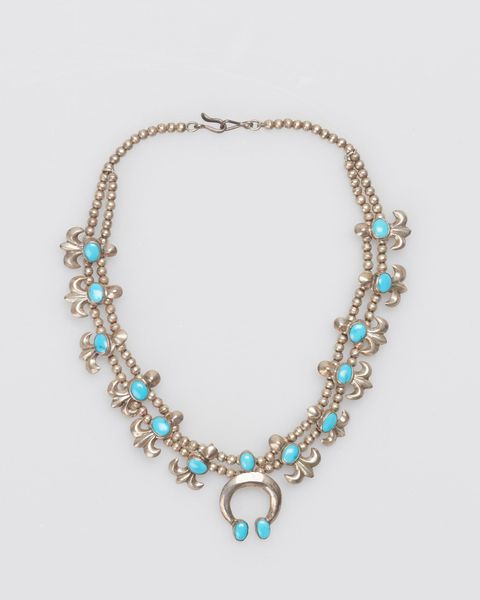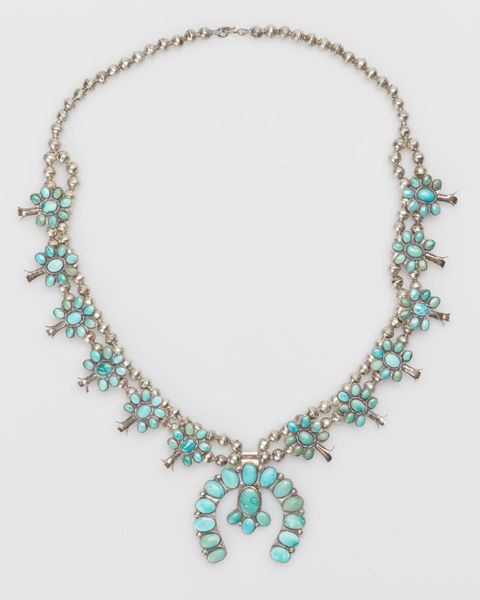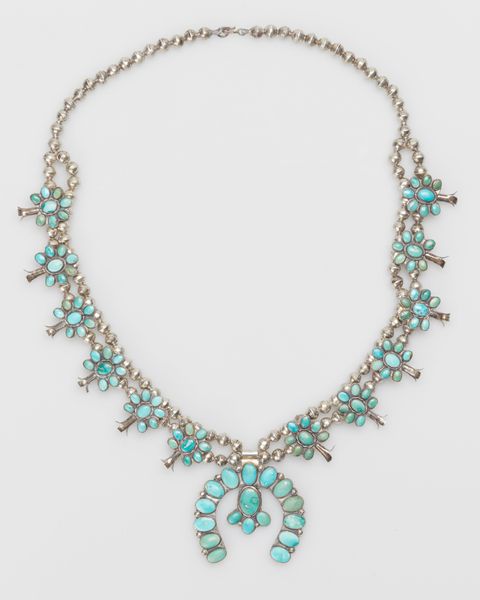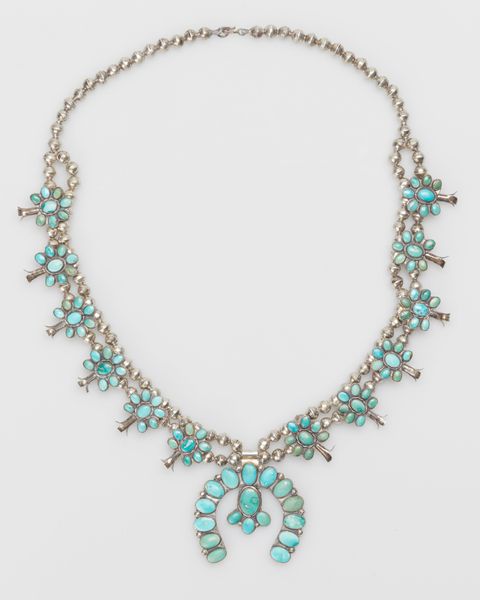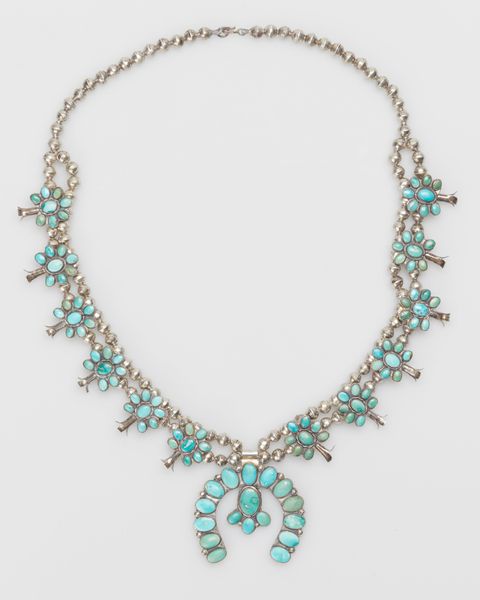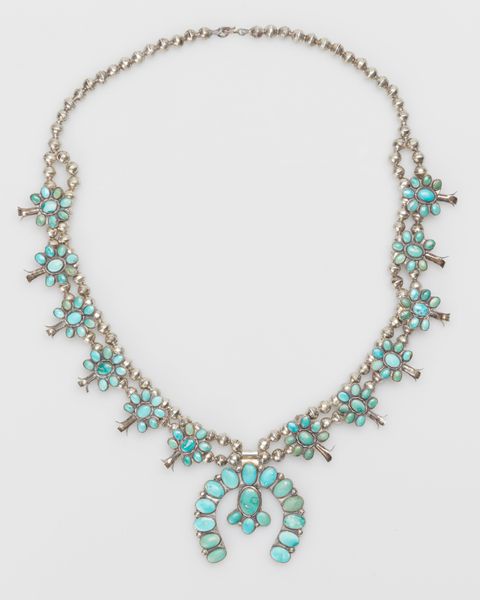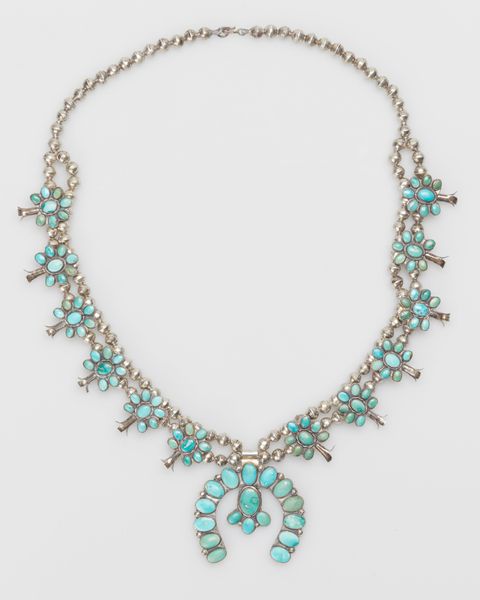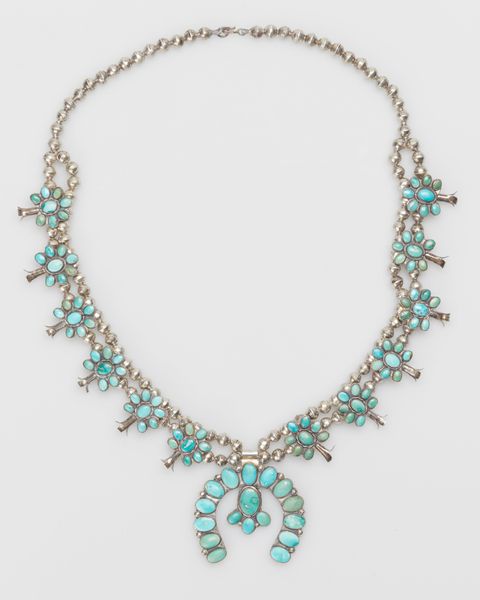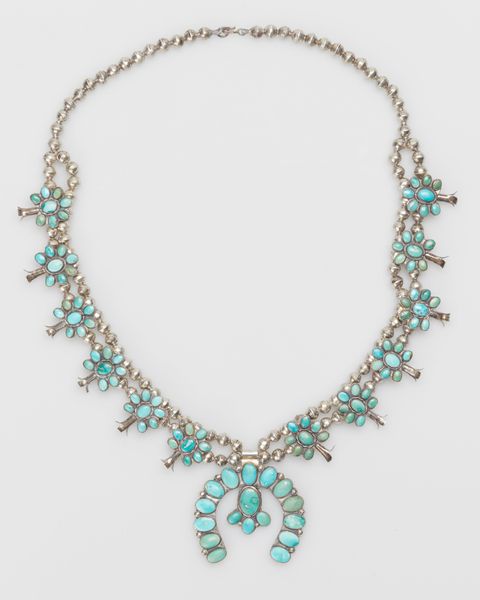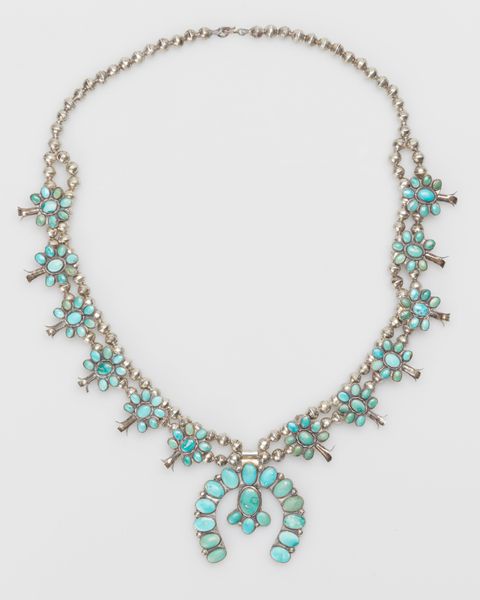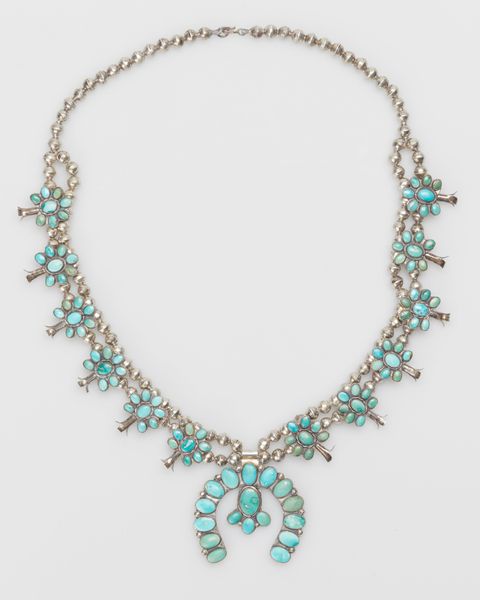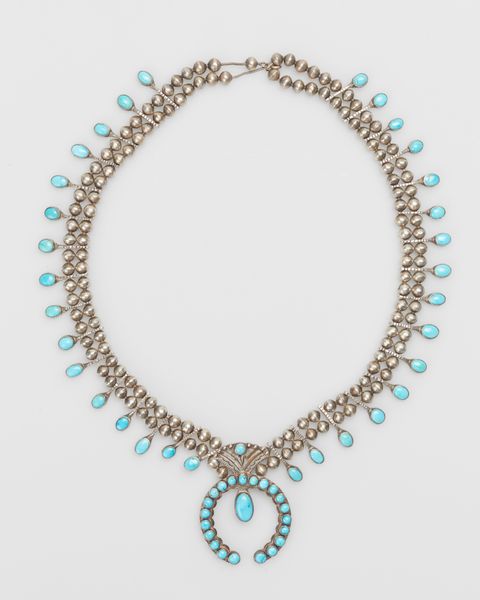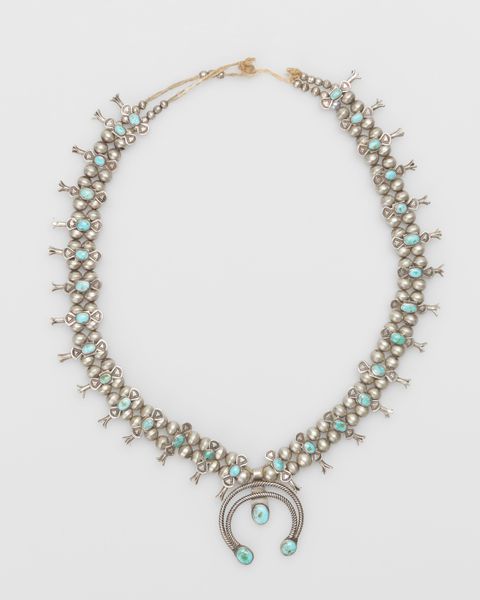
silver, metal
#
silver
#
metal
#
indigenous-americas
Copyright: Public Domain
Curator: Let’s discuss this striking piece of Navajo jewelry—a silver and turquoise necklace, created around the 20th century, housed right here at the Minneapolis Institute of Art. Editor: My immediate impression is one of serenity. The cool silver and blue tones, along with the repeating forms, give it a calming, almost meditative quality. Curator: Absolutely. Squash blossom necklaces like this carry a wealth of symbolism. The crescent-shaped pendant, called the naja, is believed to have originated from Moorish Spain, a symbol used for protection against the evil eye and incorporated into Navajo and other Southwestern Indigenous jewelry. The squash blossom beads themselves may be interpretations of pomegranate blossoms which have ties to Spanish and Mexican influence, and may reference fertility and abundance. Editor: So, we're seeing a beautiful example of cultural exchange and adaptation. But beyond aesthetics, it makes me wonder about the Navajo silversmith. What were the circumstances surrounding its creation? Were they facing economic hardship or cultural suppression? Was this necklace created for tribal use or specifically for trade? These historical conditions significantly shape our understanding. Curator: Those are vital questions. The Diné, the Navajo people, are renowned for their silverwork, which became prominent in the late 19th century. The turquoise often carries spiritual significance as well. It’s a symbol of sky and water, central to Navajo cosmology. Beyond artistry, these pieces became integral to their cultural identity, a form of resistance and self-expression amidst forced assimilation. Editor: The necklace visually narrates a story of resilience. Consider its presence in museum context. Are we actively dismantling colonial narratives about Indigenous peoples, or are we simply preserving these as aesthetic artifacts divorced from their socio-political weight? Curator: That is the crucial dialogue we need to maintain. The interplay of symbols - the naja, the turquoise, the blossoms themselves - holds memories and statements beyond simple adornment. Editor: This isn't just decorative art; it’s a visual record of survival, adaptation, and the enduring power of cultural memory. Curator: A tangible reflection of a people who shaped meaning through challenging historical forces.
Comments
No comments
Be the first to comment and join the conversation on the ultimate creative platform.
